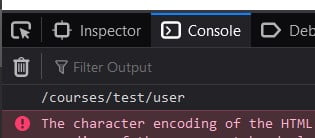
The backslash in combination with a literal character can create a regex token with a special meaning. That is because the backslash is also a special character. std::regex and Ruby require closing square brackets to be escaped even outside character classes.Īll other characters should not be escaped with a backslash. Those are discussed in the topic about character classes.

Different rules apply inside character classes. ] is a literal outside character classes.

Boost and std::regex require all literal braces to be escaped. Java requires literal opening braces to be escaped. So you generally do not need to escape it with a backslash, though you can do so if you want.
#Regex escape plus
, the vertical bar or pipe symbol |, the question mark ?, the asterisk or star *, the plus sign +, the opening parenthesis (, the closing parenthesis ), the opening square bracket [, and the opening curly brace. In the regex flavors discussed in this tutorial, there are 12 characters with special meanings: the backslash \, the caret ^, the dollar sign $, the period or dot. Special Charactersīecause we want to do more than simply search for literal pieces of text, we need to reserve certain characters for special use. cat does not match Cat, unless you tell the regex engine to ignore differences in case. Note that regex engines are case sensitive by default. This is like saying to the regex engine: find a c, immediately followed by an a, immediately followed by a t.
#Regex escape series
This regular expression consists of a series of three literal characters. Similarly, the regex cat matches cat in About cats and dogs. In a programming language, there is usually a separate function that you can call to continue searching through the string after the previous match. In a text editor, you can do so by using its “Find Next” or “Search Forward” function. It only does so when you tell the regex engine to start searching through the string after the first match. If it matters to you, you will need to tell that to the regex engine by using word boundaries. The fact that this a is in the middle of the word does not matter to the regex engine. If the string is Jack is a boy, it matches the a after the J. It matches the first occurrence of that character in the string. To match the 1+2=3 as one string you would need to use the regex 1\+2=3įor further information on using regexes in Cradle see our online help.The most basic regular expression consists of a single literal character, such as a. If you want to match 1+2=3, you need to use a backslash ( \) to escape the + as this character has a special meaning (Match one or more of the previous). If you want to use any of these as literal characters you can escape special characters with \ to give them their literal character meaning. matches ascii letters a-z (uppercase and lower case) Using Special Characters as Literal Characters

Ing$ matches “ exciting” but not “ ingenious”Īh+ matches “ Ah” or “ Ahhh” but not “ A”Īr matches “ car“, “ bar“, or “ far” ^http matches strings that begin with http Matches a specified number of occurrences of the previous Some characters have special meanings within regexes these characters are: Char Whilst you are here, take a look at Why is Requirements Management Essential for your Business? For example, if you wanted to find all items containing sequences of capital letters followed by numbers, then the regular expression would be: Last Updated on 23rd August 2022 by Jan Lamb Regex – Regular ExpressionĬradle provides support for regular expressions, regular expressions are a means to find variable text in places such as:įor instance, regular expressions (regexes) can be used in queries to find all items in which any frame, or a specific frame, or any of a list of frames, contains text matching the regular expression that you are searching for.


 0 kommentar(er)
0 kommentar(er)
